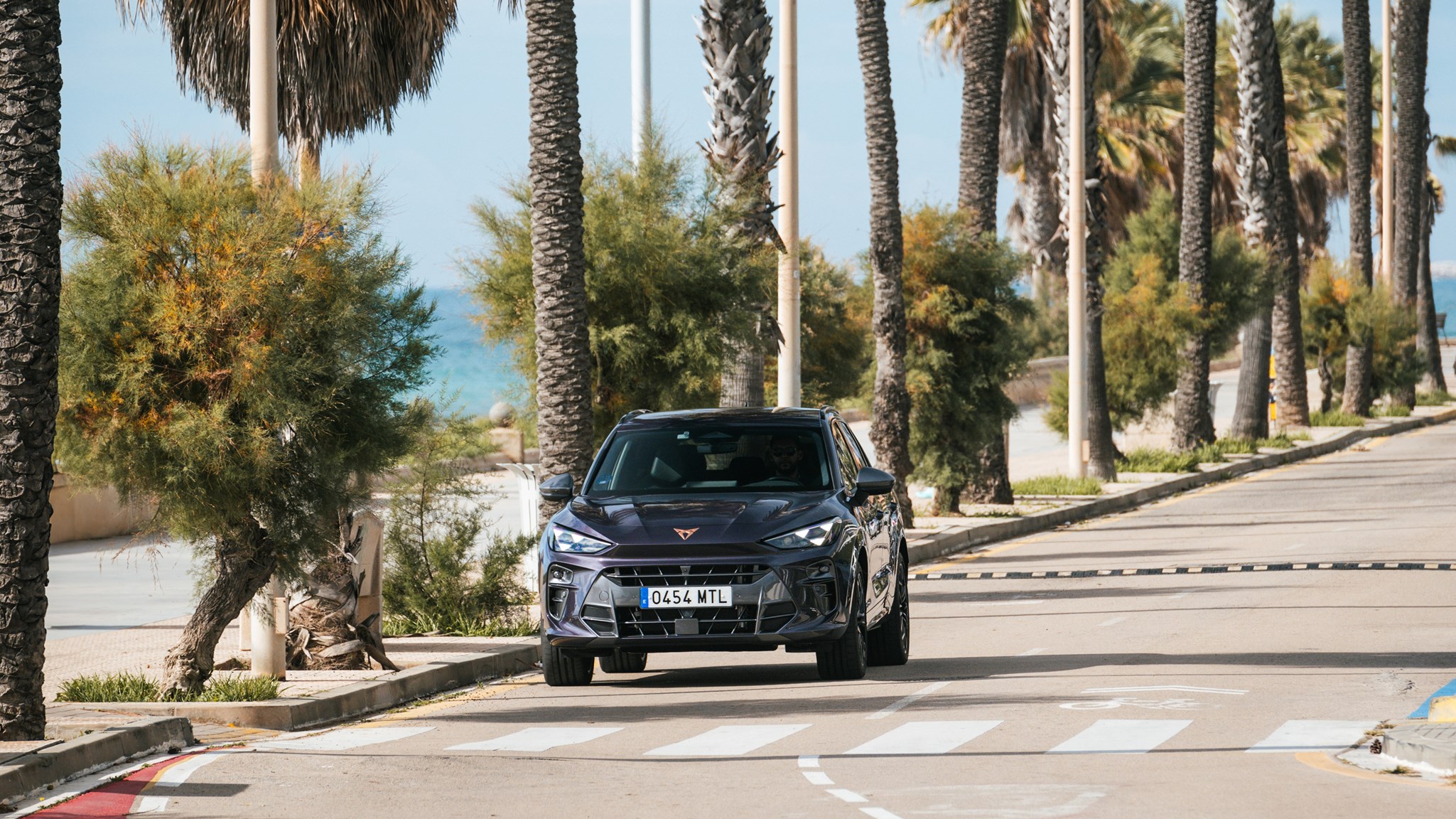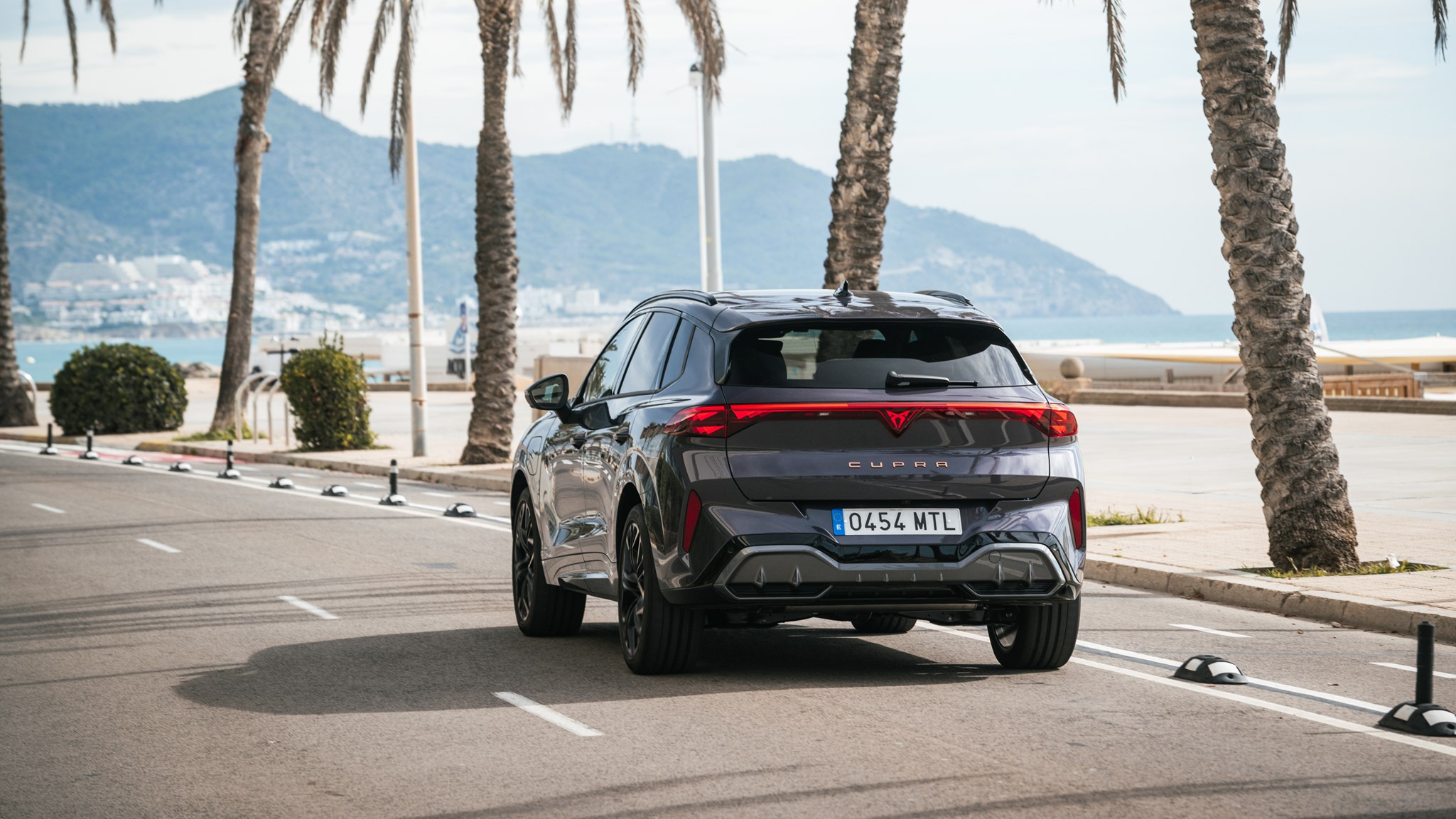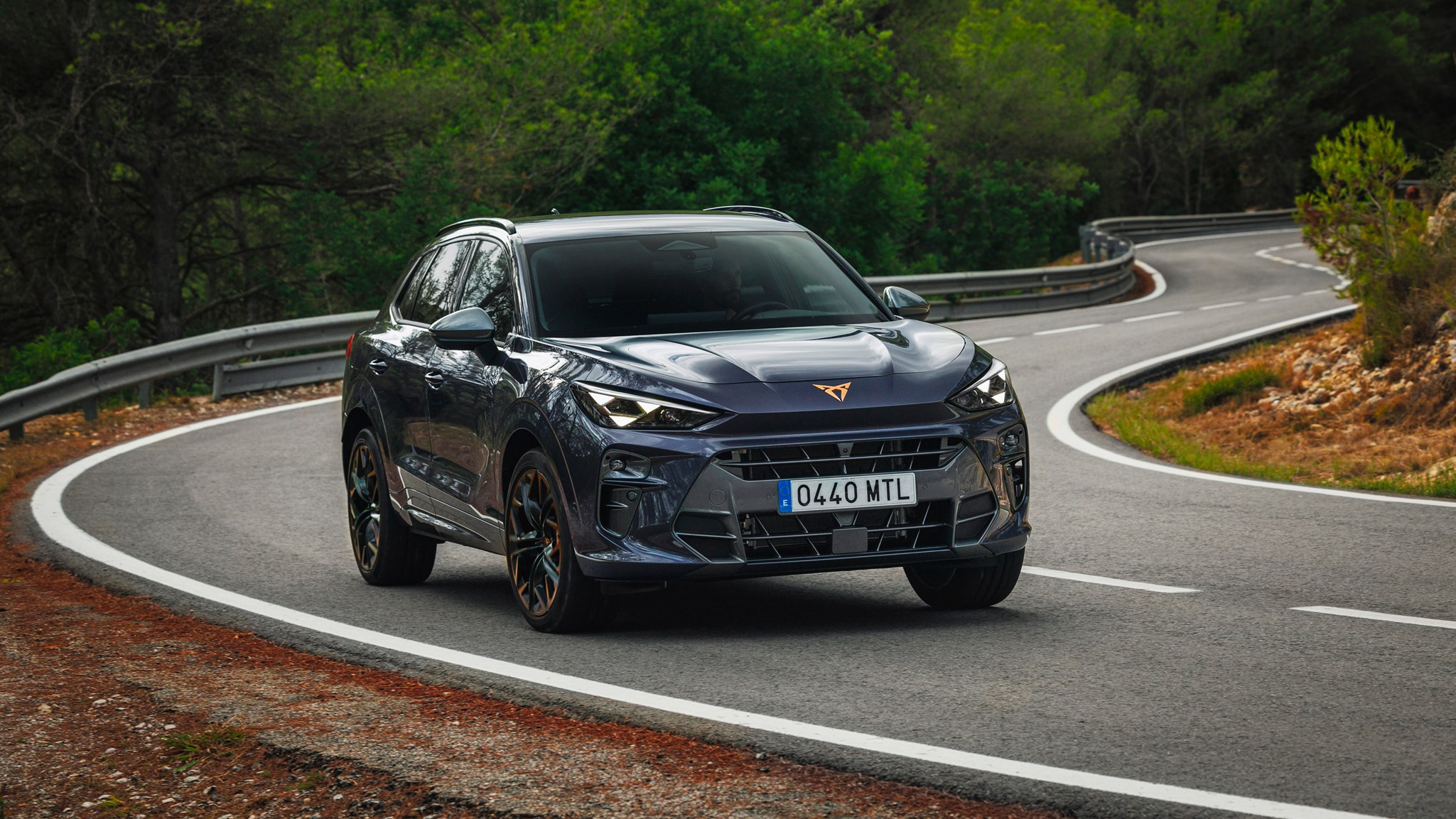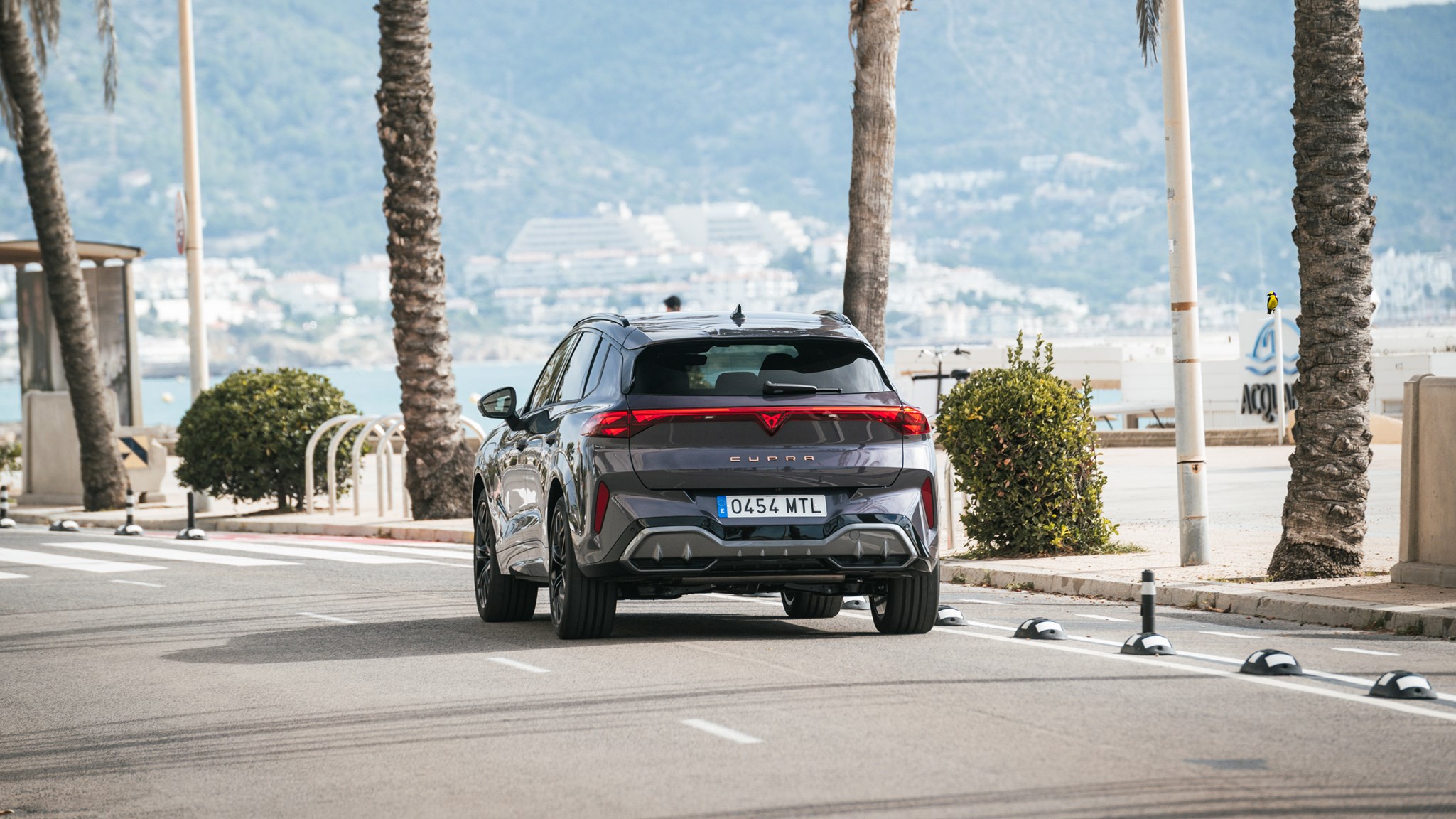► Cupra ‘grows up’
► Based on the VW Tiguan
► Five powertrains available
What does growing up mean to you? For Cupra it means making an all-new SUV available with mild hybrid, petrol and PHEV powertrains. Called the Terramar and based on the same platform as the new VW Tiguan and Cupra Formentor, it’s a far cry from the brand’s trio of EVs; the Tavascan, Born and forthcoming Raval. But CEO Wayne Griffiths is adamant that it’s still every bit a Cupra.
For him and the rest of the Cupra C-suite – sorry, ‘tribe,’ the Terramar is about growing in size, model line-up and crucially audience. As new brands go, Cupra is having a good time – having sold a total of 650,000 cars since 2018. But the Terramar is here to take the next step. Aimed firmly at the fiercely competitive and ever-growing mid-size SUV crowd, it’s a product that’ll get Cupra in front of more eyeballs and in more households than anything before.

But does the challenging, youthful Cupra badge really belong on a car this practical, this conventional and this – Volkswagen-based? Keep reading for our full review.
At a glance
Pros Decent looks inside and out, good ride, more efficient than the petrol
Cons Heavier and lacks feel compared to petrol, fake engine noise
What’s new?
Everything. The Cupra Terramar is an all-new car designed to take on the fastest growing segment in the car industry. At 1584mm tall, 1863mm wide and 4519mm long (with a wheelbase of 2681) the Terramar is little bit bigger than the ageing Ateca, and firmly in the mid-sized market – just like the Tiguan.
It’s been designed in Barcelona like the rest of the range, but it’s fair to stay the styling has a little more work to do here. Cupra’s angular ‘emotional’ lines suit compact EVs and even the larger Tavascan – but in fairness they do work on the Terramar. Key to the mix are Matrix LED Ultra headlights that proudly display the brand’s triangular trio of light points. Cupra bods are also keen to point out just how sophisticated these are – just to add clear water between this and the other MQB Evo cars.

18-, 19- and 20-inch wheels finish of the look, and can be chosen depending on which package you opt for – and how comfortable you want the ride to be.
What are the specs?
Cupra is hedging its bets when it comes powertrains to better cater to luke-warm consumer demand for EVs. With that in mind there are five powertrains in total: two PHEVs, one mild-hybrid – and two pure petrol.
The PHEVs come in two power levels, a 201bhp (150kW) version and a more powerful 268bhp (200kW) version with 295lb ft of torque. We drove the latter. It uses a 1.5-litre petrol engine, and pairs it to an electric motor powered by a 19.7kWh battery. It also goes through a six-speed DSG gearbox which sends power to the front axle only.

Being a PHEV, it’ll do 70 miles on a single charge, and can fast-charge once the battery’s done. Official CO2 and efficiency figures haven’t yet been disclosed. We’ll update this article when we have the stats.
The top-of-the range Terramar PHEV we drove takes 7.3 seconds to get from a standstill to 62mph.
Chassis-wise, the Terramar gets a 10mm-lower sport suspension as standard with front MacPherson struts and a rear-multilink setup. There’s progressive steering on the front axle and uprated six-piston Akebono brakes as an option. Engineers have tweaked the Dynamic Chassis Control (DCC), and the Terramar also gets two-valve shock absorbers. The ESC can be turned off in the VZ trims we’ve driven – but not the lower models.
How does it drive?

The Terramar’s hybrid powertrain means it’ll pull away in silence but get some speed up and you’ll feel the engine chime in too – and hear a very optimistic V8-esque sound pumped through the cabin. It’s actually quite intrusive depending on the mode you’re on. An electric motor takes care of the low end, so it’s fine around town in EV-only mode – and it’ll use both when you want more performance.
Being front-wheel drive only, this Terramar will give a bit of torque steer when you stamp on the gas – and with ESC Sport mode it’ll spin up the front tyres at junctions and roundabouts too. It doesn’t feel slow in a straight line but between the machinations of the Cupra’s hybrid powertrain and the stingy Barcelona speed limits, it offers ‘warm’ performance.

The ride is one of the best aspects of the Terramar and that goes for the eHybrid too. It soaks up smaller bumps around town and feels refined and well resolved – but it’s not too spongy when you’re pushing on either. We’ll update this review when we get the Terramar on UK roads, but it’s looking promising.
In the mountain roads above Barcelona, we were able to push the Terramar as much as you’d want to hustle a Tiguan-sized SUV, and it held up well. Roll was present but not crazy, and there was just enough bite and feel in the front axle to build confidence.
However, we drove the hybrid back-to-back with the four-wheel-drive petrol car, and found the hybrid the weaker of the two. The main issue? Weight. The hybrid is heavier (this eHybrid weighs 1904kg to the 2.0-litre petrol’s 1750kg), and it feels noticeable in every area of performance – especially changes of direction and braking. It feels as though it’s carrying a backpack – and it’s not really got the power or the excitement to make up for it.

The hybrid also suffers from less precise control weights. The steering, while predictable enough, feels looser than the petrol regardless of which mode you’re in, and the brakes while powerful (thanks to the Abokado pads our example drove) feel somewhat inconsistent. Stamp on them and they’re fine, but lift off or trail brake and their response is somewhat ‘lumpy.’
Bends we hesitated before in the eHybrid, we could flick through in the petrol car. The difference isn’t huge – but whether or not the probable efficiency increases are worth the performance hit depends on your use case.

What about the interior?
If you’re expecting bio-mechanical and unusual like the Tavascan, you’re going to be disappointed. There are no swooping struts in the Terramar, nor unusual design touches. Instead, Cupra’s grown-up interior is more conventional, with the same steering wheel, gear selector and 12.9-inch infotainment screen as other VW Group and Cupra products.
As you’d expect, there are unusual textures and bits of burnished copper stuck over the Tiguan-based furniture, but everything feels a little more functional and mundane. This is a car for a larger audience, and you can feel the Terramar’s more conservative VW Group DNA just below the surface.

Still there are nuggets of technology if you look close enough. Wireless charging is included and the Terramar also packs in an optional 12-speaker, 390-watt Sennheiser-branded system. We listened to a mixture of contemporary tunes from Apple Music’s default radio station with good results. Bass was delivered in a reassuringly punchy fashion, while vocals sounded clear and undistorted. Should Mercedes’ Dolby Atmos and Burmester engineers be worried? Not really, but it’s better than average for this sort of car.
All Terramars get front and rear parking sensors, a rear-view camera, lane assist and adaptive cruise control as standard. The latter works well and is easy to configure using physical buttons on the wheel.
Hop to the rear seats and you’ll find space is limited but competitive for cars in this sector. With the drivers’ seat an inch or so forward from my ideal seating position, I was able to squeeze my 6’3 frame behind itself. It was made easier by sculpted recesses for knees on the rear of the front seats.

Cupra offers three interior characters: Deep Ocean, Moon Light and High Canyon. The first uses 100% upcycled Seaqual yarn made from marine plastics. The second is dark grey and uses 73% polyester, while the High Canyon features a burgundy number that uses leather tanned with a plant-based process. All three suit Cupra’s more fashionable palette, but the leather seats did squeak a bit – which wasn’t ideal.
Boot space is 400-490-litres in the plug-in hybrid car and 540-642-litres in the petrol car. In reality, we found the petrol big enough to carry two to three cabin bags with ease.
Before you buy
The Cupra Terramar faces competition from all sides; from within the model range, from its MQB Evo relatives, and finally from the other cars in its hotly contested sector. Unfortunately, it’s bested at the first hurdle by the petrol version we drove. Slightly nimbler and grippier thanks to four-wheel drive, the petrol is cheaper too. In comparable trim, the petrol car we drove was £46,040 to the hybrid’s £49,460.
Opt for VZ1 trim instead of the higher VZ2, and those numbers go down to £43,390 and £46,810. The difference between VZ1 and VZ2 includes things like 20-inch wheels instead of 19-inch rims, a head-up display and other bits like lane assistance, performance tyres and leather seats. Both VZ trims get dynamic chassis control and the ability to turn off ESC.
Whether or not the hybrid makes up for it in efficiency remains to be seen – Cupra hasn’t yet released figures for it.

The range starts off with V1 and V2, but neither the top hybrid nor top petrol is available in those trims. We’ll update this review when we drive those.
The Terramar’s MQB Evo guts invite comparisons to the Tiguan, and the Cupra can be viewed as a more premium-feeling, exciting version. You pay a slight premium for the VW Group’s new badge, but as the ID.3 and Born shows, it’s a formula that works for both manufacturers.
Verdict
The Terramar is the most grown-up Cupra we’ve seen thus far, and the fuel-sipping PHEV represents the new SUV’s most sensible variation. With that in mind, the result is somewhat predictable – and it’s almost testament to Cupra’s recent brand-building that it feels a little flat.
It’s almost certainly fine for most consumers and the wider market, but on closer inspection it lacks the sparkle and style of halo products such as the Tavascan, Born VZ and the petrol-powered Formentor. And even the petrol version of the Terramar. Cross shoppers elsewhere may well buy into the brand’s exciting performance and challenger-focused ethos – but in this Terramar they’re somewhat diluted.